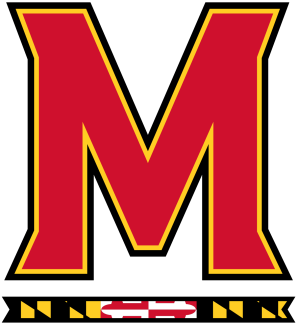T
he Tufts tableau, though, started with a single-digit mentality. And this is one of the basic Tenets of the Play Fast approach: Don’t try to fit a square peg in a round hole. Without the personnel needed to get there, Daly felt, he put together a grind-it-out plan to start. He had also listened to what the King of the 90s, Princeton’s Bill Tierney, said about winning low-scoring, ball-control battles. Daly met with Tierney one year at a US Lacrosse Convention in Philadelphia to learn more about winning games 7-5 instead of 17-15.
“I still had that imprint of those Syracuse teams in my head,” Daly says. “I knew that’s how in the purist sense I thought of the game. But I don’t think if we wanted to play that style, we could have. Winning is most pure, so we were trying to win.”
Tufts went 5-10 in 1999, Daly’s first season, and won nine games the season after that. By 2001, they made the inaugural NESCAC postseason tournament and reached its title game in 2003. But the climb from there proved harder, ending three straight seasons with early exits in the league tournament.
May 2006. Virginia won the NCAA Division I championship, and went undefeated, by playing the style Daly aspired to. They scored 15 goals per game and outscored opponents by an average of eight. Daly was ready to try something similar. “The divine discontent with failure,” as he defines what lies within him, was at work. In his first seven seasons, Tufts made a “below-average to good” jump in the Division III world, but still looked up at top-10 teams and league top dog, Middlebury. Daly wanted to take a “good to great” chance. He sought out another figure in the coaching cream of the crop, Virginia’s Dom Starsia, to learn more.
“We started making moves into how we could gain an advantage. That’s where it all started to coming together,” Daly says. “The absolute simplest form of it is trying to score against really athletic, good people six-on-six is a challenge. You’re margin for error is small. We didn’t feel we were as athletic as Salisbury, Cortland, Middlebury, Bowdoin and a lot of teams in our league. We were struggling to try to hold those teams to single digits. But, if you can keep some of their offensive personnel on the field and attack those guys, who aren’t used to playing defense, in some space and in non-traditional four-on-fours and five-on-fours and five-on-fives, that could get us over the top.”
Want to push transition? Instead of immediately subbing off short-stick defensive midfielders, why don’t we first pencil in one short-stick defensive midfielder on each offensive line? And then they’ll fill back on defense too. Let the long poles roam too. Use their athletic IQ.
“Early on, we always had a couple good football-lacrosse guys, or hockey-lacrosse guys,” Daly says. “Putting those guys in that space, in non-traditional sets in transition, did allow us to gain that advantage we were looking for.”
The secret sauce is in establishing the framework. “As soon as the goalie makes a save, we’re on offense,” Daly says. Trust the players. Go and play. Timeouts be damned. “The number one thing that we do every day is develop a culture where mistakes are embraced,” Daly says. “We’re the aggressor. We’re taking it to them. Sure we’ll make eight mistakes, but we’ll make 10 more plays to make up for those mistakes.”
For instance, in Brown’s 25-9 season-opening win against Quinnipiac this year, it took 67 shots—almost double 2016’s national average of 35 taken per team per game, and even Brown’s 45 per-game average last season. The Bears also committed 26 turnovers.
This season, they’re 9-5, averaging 45.7 shots, 14.4 goals and 16.9 turnovers. After blasting Dartmouth on Saturday, 20-5, they’re also riding their first four-game win streak of the year heading into this week’s Ivy League tournament. They’ll play Princeton in the semifinals at 3:30 p.m. Friday in New Haven, Conn. Dylan Molloy, the reigning Tewaaraton Award winner, again ranks among the nation’s leaders in goals (3.17 per game, fifth-best nationally) and points (5.25 per game, fourth-highest).
It might come as a surprise to those that watched the philosophy manifest at Tufts — including averages of 52 shots, 17 goals, 17 turnovers the last three seasons and a single-season all-division record of 423 goals in 2014 — but the most glaring violations of the plan, ones that would call for Daly’s film room derision and reminder that he never played the game, would be breaking what those who have been in the program call the Tenets. Fundamentals like attacking the net, communication, active feet, throwing off your front foot, cohesion, spacing and shape.
“You could give these to a third- or fourth-grade team,” says former attackman John Uppgren, who led Division III in scoring from 2014-16, when Tufts won two titles in 2014 and ’15. Uppgren laughed when he relayed the principles from a piece of paper in the Tufts lacrosse office, where he’s in his first year as an assistant coach under the new staff helmed by Casey D’Annolfo. “I think we had a couple set plays, but they’ve remained the same for the last five years. It’s a lot of concepts, giving each other space. And putting it in the back of the net.”
“A lot of it was these basic fundamentals,” says Virginia offensive coordinator Sean Kirwan, the former Tufts’ All-American attackman (in 2011 and 2012) and assistant coach (from 2013-14). He is the one who brought the program’s style to Brown in advance of Daly’s arrival, as an assistant for former Bears coach Lars Tiffany the previous two seasons in Providence before following him to Charlottesville. “If your man’s not covering you, you’re in a position to put pressure on a defense, little things like that,” Kirwan says. “It’s awesome. In a film session, you can then point to these rules as opposed to, ‘You didn’t take the correct three steps this way.’”
Once across midfield, “We don’t look to solve things in a traditional 1-3-2 or this position, or rotation,” Daly says. “It’s, ‘These are the people we’ve got. These are the positions they can be successful in. How can we put them in those positions as often as possible?’ There’s some structure to it, but it’s really as simple as that. It’s fluid, constantly evolving and adapting. In 2006, we were all-in, and started to move our personnel that way.”
Seemingly to plan, exactly four recruiting classes later, in 2010, Tufts won its first of seven straight NESCAC titles. The Jumbos went 20-1, beating Middlebury three times (including for the league championship and in the NCAA quarterfinals). Then they defeated Cortland in the semifinals and Salisbury in the championship to win Tufts’ first national title. Daly immediately texted Quinn, one of his lacrosse Yoda’s who was now Middlebury’s AD, after hoisting the NCAA trophy. “I haven’t forgotten what you did for me,” Daly wrote.
Soon, other teams called to pick Daly’s brain. Before its 2012 national championship season, Loyola coach Charley Toomey invited Daly to Baltimore to teach a crash course in Play Fast. The Greyhounds had what they believed were elite offensive players, if they could only get them more shots (ideally close to 50 a game). Plus, they had talented short- and long-stick defensive midfielders like Josh Hawkins and Scott Ratliff, respectively, to deploy.
“We found some things to make ourselves play faster, no doubt,” Toomey says. “We weren’t going to allow it to be complete chaos, where I think Mike is willing to do that, but we definitely drank the grape juice.”

PHOTO COURTESY OF BROWN ATHLETICS
Daly was not looking to leave Tufts, but found the perfect suitor in Brown, a team with which he already had personal, philosophical and geographic connections.
T
he phrase “perfect fit” isn’t quite strong enough to describe Daly’s move from Tufts to Brown last summer, ahead of this season. He wasn’t looking to leave a place where he compiled a 244-83 record in 18 years as head coach, but it made so much sense on and off the field.
Kirwan had already primed the program philosophy pump at Brown as an assistant. The Bears ran with the ideas all the way to last year’s final four, with the nation’s top scoring team (more than 16 goals per game). Before this season, Kirwan joined Tiffany when Virginia hired him away, but they left behind Molloy. He is the younger brother of Ryan, who played for Daly and was a Tufts captain in 2011. Daly, as he’s unabashedly done throughout his career, also was able to hire a pair of Tufts alums, Brett Holm and Matt Callahan, as assistant coaches.
Though the Daly family moved from Reading, Mass., to Portsmouth, R.I., the relocation actually put Daly’s wife closer to the courthouses she works in as a juvenile care and protection lawyer for the state of Massachusetts. And closer to where the family spends vacation at the beach on Rhode Island.
Even Daly’s NASCAR fandom was obliged. At Tufts, Daly enjoyed the support of Tufts alum Andy Murstein, owner of Richard Petty Motorsports and Major League Lacrosse’s New York Lizards. In the Brown lacrosse office, a fire suit once worn by NASCAR driver Tony Stewart hangs. Imagine the surprise on recruits’ faces when the first thing they see behind Daly’s desk is a giant Bass Pro Shops logo on a black-and-red adult pajama uniform that could be worn by Ricky Bobby. In silver Sharpie marker near the suit’s left shoulder, it reads, “Mike, Good luck! Go BEARS!” above Stewart’s signature. Brett Frood, a 1997 Brown graduate who is president of Stewart-Haas racing, sent the gift to the program’s new head coach.
Forget about making a bad joke about playing fast and driving fast, although “there are some parallels,” says Uppgren, who, with more than 400 career points, could be considered the Jimmie Johnson of Tufts lacrosse.
The point is, a lacrosse outsider is now one of its game-changers. There were times early in his coaching career when Daly tried to hide the fact that he never played lacrosse. Not now. In fact, the nation’s foremost proprietor of Play Fast Lacrosse counts his 30,000-foot view as one of his greatest assets.
“It’s a simple game,” Daly often says in the film room. But what does he know? All he did was play football and baseball.


























































